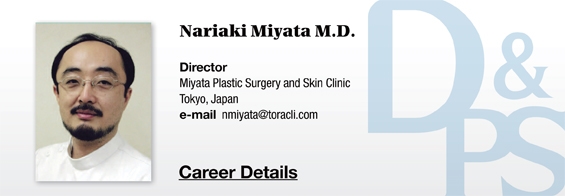
We have finally come to the last article of this series. I wonder if the discussions of current trends in various fields of Japan’s aesthetic medicine as well as my personal experiences with various medical devices that I have shared in this series have been helpful for Korean doctors.
In the last decade, I have visited Korea over 40 times to get a close look at the advanced aesthetic medicine of the country. I was often accompanied by distributors of medical devices, which gave me a good opportunity to learn about various devices and medical supplies that are popular in Korea. I have met and talked with at least 50 Korean doctors during my visits to their offices to observe real procedures and hear their experiences.
I speak some English but very little Korean. The language barrier was a challenge but fortunately all Korean doctors I met were understanding and willing to share their knowhow with me.
From my visits in Korea, I learned that Koreans like state-of-the-art technology and quick results. In Korea, doctors and patients are enthusiastic about trying new devices that do not have established efficacy or safety profiles. This is very different from Japan, where doctors are very cautious and rarely try new treatments.
My job is to encourage the Japanese doctors to be more adventurous. In Japan, someone has to try the new device or technique and present the results in many academic seminars before other doctors start purchasing the new device. But that does not mean that I will try all new devices or techniques. It is important to quickly and accurately assess the efficacy of a new treatment as well as its appropriateness in the current Japanese market. Just because one treatment became popular in Korea does not mean it would also be successful in Japan. Therefore, one should be able to recognize treatments that are the right fit for his/her country.
[Advertisement] FCR® (Fractional Prickle CoralCalcium Regentron) – Manufacturer: (www.illglobal.com)]
Treatment protocols often vary between Japan and Korea. For example, the “water glow injection (facial hyaluronic acid injection)” that became widely popular in Korea will never be successful in Japan because of the downtime. The injection causes bleeding and bumps that last a few days after treatment and Japanese patients would never agree to such noticeable complications, no matter how good the efficacy. I was able to make the treatment popular in Japan by modifying the treatment slightly by injecting the needle in shallow depths. Such a technique resulted in lowered efficacy but Japanese patients were more accepting of the treatment due to less sequelae. Japanese people are particularly averse to even slight swelling or bleeding. It is important to understand the characteristics of the population and modify the treatment as needed.
Personally, I am open to trying new treatments and hope that they are more accepted in Japan. I have no financial interests in making a certain device or treatment popular. I pay for the travel expenses of my trips to Korea out of my own pocket. This gives me the freedom to consider various devices and choose only the ones I think will be suitable for Japan. When I get paid by manufacturers for my lectures, etc., I lose the freedom to express my honest opinions. My fellow doctors will see through this and will not trust my opinions.
-To be continued




















